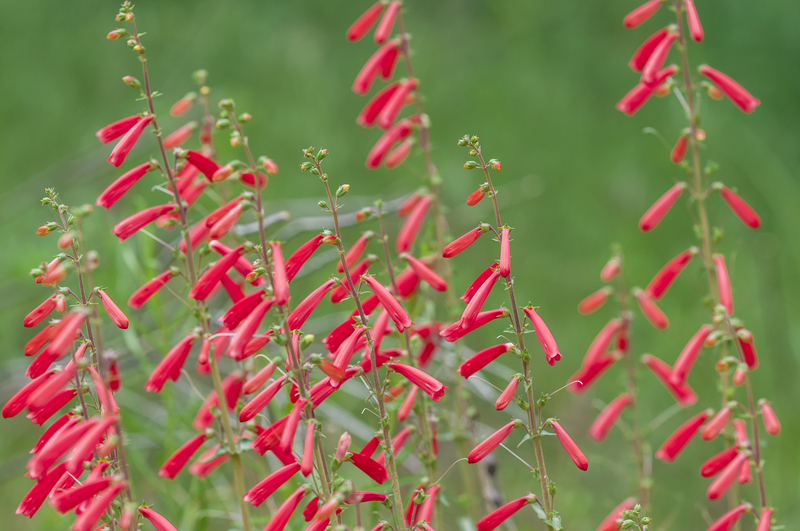Achieve orchid nirvana with proper care
Posted on 19/05/2025

Achieve Orchid Nirvana with Proper Care: A Complete Guide
Orchids are revered for their ethereal beauty, exotic flair, and stunning blooms. Cultivating these remarkable plants can be both a challenge and a joy for gardeners of all skill levels. If you aspire to achieve true orchid nirvana, it starts with understanding and providing meticulous care tailored to these elegant beauties. This comprehensive guide unveils all secrets to nurturing thriving orchids in your home or garden.

Table of Contents
- Why Orchids Fascinate
- Key Orchid Species for Beginners & Collectors
- Essential Orchid Care Tips
- Watering Orchids Wisely
- Perfect Light for Orchids
- Humidity & Temperature Needs
- Fertilizing Orchids
- Repotting Your Orchid
- Dealing with Common Orchid Problems
- Maximizing Bloom and Growth Cycle
- Orchid Nirvana: Myths vs. Facts
- Bonus: Expert Orchid Care Tips
- Conclusion
Why Orchids Fascinate
The allure of orchids transcends generations and cultures. Their unique shapes, vibrant colors, and delicate fragrance make them highly coveted. Historically, these mesmerizing plants have symbolized love, luxury, and strength. Today, orchids are popular not just in gardens, but also as indoor plants, where their elegant blooms bring a touch of exotic luxury.
Orchid Nirvana: What Does It Mean?
Achieving orchid nirvana refers to that moment when your orchid not only survives, but thrives--offering robust growth and spectacular blooming, year after year. Whether you are a novice growing your first Phalaenopsis or a seasoned collector nurturing rare Cattleyas, the ultimate goal is to understand and provide the best orchid care for long-term success.
Key Orchid Species for Beginners & Collectors
Before diving into care routines, let's explore the most popular orchid types you may wish to add to your collection:
- Phalaenopsis (Moth Orchid): Easy to grow, ideal for beginners, and offers long-lasting blooms
- Cattleya: Known for large, fragrant flowers. Requires bright light and more advanced attention
- Dendrobium: Thrives with basic care, offering diverse flower forms
- Oncidium (Dancing Lady): Flourishes in bright, indirect light and provides abundant sprays of flowers
- Vanda: Stunning blooms, loves humidity and air movement--ideal for display in orchidariums
*Choosing the right orchid variety is the first step towards orchid bliss and success.*
Essential Orchid Care Tips
Unlock the secrets of orchid nirvana with these essential care steps. Orchids are not demanding--when you supply the right combination of light, water, humidity, temperature, food, and growing medium.
- Know Your Orchid: Different species have different needs. Always identify your orchid's type before setting a care routine.
- Choose the Right Pot and Medium: Orchids need superb drainage. Use bark, sphagnum moss, or specialized orchid mixes instead of regular potting soil.
- Establish a Watering Routine: Overwatering is the #1 reason orchids decline. Find the correct balance for your home environment and species.
- Provide Proper Light: Most orchids need bright, indirect light. Too little or too much will hinder blooming.
- Maintain Airflow and Humidity: Orchids love humid, well-ventilated spaces. Mimic their tropical origins for optimal health.
Orchid Success Tip:
Happy orchids = Healthy roots + Plentiful blooms. Pay equal attention to both above and below the pot!
Watering Orchids Wisely
The cornerstone of orchid care is proper watering. Orchids are susceptible to both underwatering and overwatering. To achieve that orchid paradise indoors, follow these expert recommendations:
- Water only when needed. The potting medium should be almost dry before watering again.
- Use tepid, distilled, or rainwater. Tap water with salts and chlorine can harm sensitive roots over time.
- Avoid letting roots sit in water. Always empty saucers and never allow the base of the pot to remain soggy.
- Mornings are best for watering. This allows any excess moisture to dry before cooler night temperatures arrive.
Quick Test: Stick your finger or a wooden skewer an inch into the growing medium. If it feels damp, wait a bit longer before your next watering.
Perfect Light for Orchids
Light is a vital ingredient for orchid happiness. Too much sun can scorch leaves; too little keeps them from blooming. The ideal spot is usually a bright, east or south-facing window filtered with a sheer curtain.
Detecting Light Problems
- Dark Green Leaves: Not enough light (expect fewer blooms)
- Yellowish Leaves: Too much sun (risk of sunburn)
- Rich, mid-green leaves: Perfect light for most orchids
For artificial lighting, use full-spectrum grow lights 12-14 hours/day, especially in winter or in lower-light homes.
Humidity & Temperature Needs
Orchid tranquility is deeply intertwined with proper humidity. Most orchids originate from moist, tropical climates and flourish when humidity is between 50-70%. Low household humidity can lead to dry leaves and bud drop.
How to Boost Humidity
- Use a pebble tray filled with water under your orchid pot (but NOT submerging pot base)
- Mist plants lightly each morning, avoiding blooms
- Run a small humidifier in the room, especially during winter heating
- Group orchids together to create a microclimate
Temperature guidelines depend on species, but most home-grown orchids prefer:
- Daytime: 65-80?F (18-27?C)
- Nighttime: 55-65?F (13-18?C)
Fertilizing Orchids: The Secret to Spectacular Blooms
Fertilizer is your ally on the path to orchid nirvana. Feed your orchid with a balanced, water-soluble fertilizer, diluted to one-quarter strength.
- Feed every 2 weeks during active growth (spring and summer)
- Once a month in fall and winter (less growth period)
- Rinse with plain water every other feeding to prevent salt buildup
- Look for formulas labeled specifically for orchids, such as 20-20-20 or 30-10-10 (follow label)
Tip: "Weakly, weekly" is an orchid grower's mantra for gentle, regular feeding.
Repotting Your Orchid
Repotting is a vital step to keep your orchid thriving. Over time, orchid bark and sphagnum moss break down, suffocating tender roots and harboring pests.
- Repot every 1-2 years, or when the medium collapses
- Handle all roots gently; only trim dead or mushy roots
- Choose a slightly larger container only if roots are crowded
- Always use fresh, high-quality orchid medium
Warning: Never repot orchids while in peak bloom. Wait until the flowering cycle has finished.
Dealing with Common Orchid Problems
Even with proper orchid care, occasional issues can arise. Address them swiftly to maintain your orchid oasis:
Common Orchid Issues
- Yellow Leaves: Usually overwatering or insufficient light
- Wrinkled Leaves: Underwatering or root rot
- Bud Drop: Temperature/humidity shock, moving plant, or recent repotting
- Root Rot: Poor drainage or old medium
- Pests: Treat aphids, mealy bugs, and scale with insecticidal soap or neem oil
- No Blooms: Insufficient light, incorrect feeding, or lack of cool nights
Inspect your orchid regularly. Early intervention saves plants and maximizes each bloom cycle.
Maximizing Bloom and Growth Cycle
Eager for a constant cascade of spectacular flowers? Once you've stabilized the basics:
- Encourage a Rest Period: Many orchids, particularly Phalaenopsis and Dendrobium, need a slight dip in nighttime temperature to trigger blooming after rest.
- Keep Leaves Clean: Gently wipe leaves with a damp cloth to keep pores clear and enhance photosynthesis.
- Support Flower Spikes: Delicately stake spikes as they extend to prevent snapping under flower weight.
- Remove Old Blooms: After flowering, cut old spikes just above a node to spark a new flush in some species.
Orchid Nirvana: Myths vs. Facts
- Myth: Orchids are difficult and only experts can grow them.
Fact: With the right information, anyone can keep orchids thriving! - Myth: Ice cubes are the best way to water orchids.
Fact: Orchids prefer thorough, tepid watering. Ice can shock delicate roots. - Myth: All orchids have the same care needs.
Fact: Individual species may require different light, water, and feeding routines. - Myth: Orchids only flower once.
Fact: With proper orchid care, many types will rebloom for years!
Bonus: Expert Orchid Care Tips
- Invest in a digital hygrometer to monitor both temperature and humidity at a glance.
- Rotate your orchid periodically for even leaf growth and flower development.
- Quarantine new plants for 2-3 weeks before adding them to your main collection to prevent pests.
- Consider mounting epiphytic orchids, like Vanda or Dendrobium, on bark or cork for dramatic effect.
- Record your care routine in a garden journal to identify what each orchid loves best!
Conclusion: Your Path to Orchid Nirvana
Achieving orchid nirvana is well within your grasp. The journey is a rewarding blend of learning, patience, and respect for the nature of each orchid species. From embracing the nuances of watering and light, to understanding how to feed, repot, and trouble-shoot common problems, every step leads you closer to breathtaking success.
Unlocking orchid bliss is not about luck--it's about knowledge, care, and consistent attention. Let these tips inspire you to cultivate not just an orchid, but a living masterpiece.
Ready to create your own slice of orchid paradise? With these comprehensive care practices, your orchid collection will flourish--transforming your space into a true sanctuary of color, fragrance, and vitality. Here's to your orchid nirvana!

